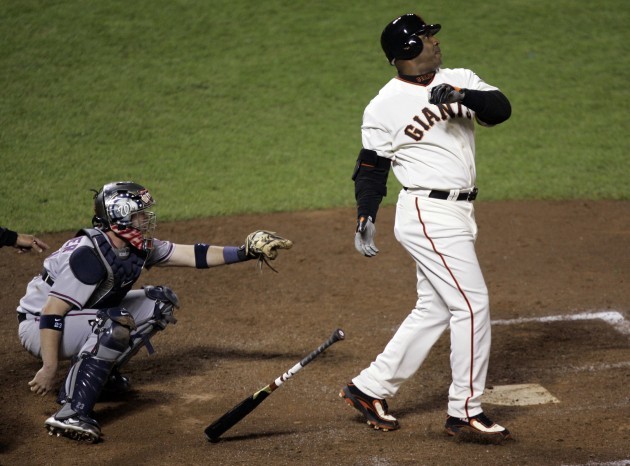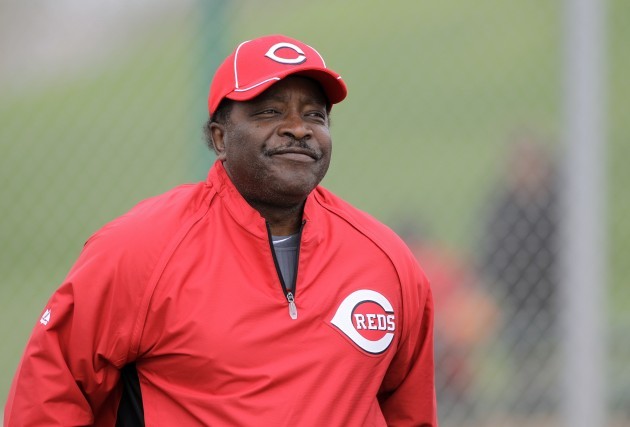MICHAEL LEWIS’ BOOK “Moneyball” came out in 2003, and has become the most important book in baseball since Jim Bouton’s “Ball Four” was released in 1970.
But while “Ball Four” brought the clubhouse and the off-the-field lives of players to the fans, “Moneyball” opened the door to the front office for everybody to see.
But more importantly, Lewis helped popularise a growing trend in baseball.
The gap in baseball is widening between the haves and the have-nots. Those running teams outside of New York, Boston, Chicago or Los Angeles could either accept their fate as second-class citizens in an Evil Empire, or they could try and find a sling and a rock and take their best shot at the Goliaths.
But considering the popularity of “Moneyball,” it is still a highly misunderstood book. And nearly a decade after its release, several myths still linger.
Myth 1: Billy Beane Invented “Moneyball”
(THE CANADIAN PRESS/Nathan Denette)
Sabermetrics is the term for advanced baseball stats that attempts to derive empirical and objective answers to complex baseball questions. Through the use of Sabermetrics one can get a better sense of which players have performed the best, which players are more likely to get better, which players are likely to regress, and the players that are more likely to maintain their current level of play.
And if a general manager is able to identify these trends, they are better suited to find players that will help their team win without having to spend a lot of money. In other words, Sabermetrics is a form of “Moneyball.” And Sabermetrics was invented long before Billy Beane was running the A’s.
Sabermetrics was a form of baseball statistics that was pioneered by many people. But the most famous voice early on was Bill James.
Myth 2: The “Moneyball” System Is About Players With Strong OBPs
(AP Photo/Marcio Jose Sanchez)
This is the biggest myth that still lingers today. At the time the book was being written, it just so happened that players with a strong affinity for getting on base (high OBP) were overlooked by most teams. Teams were more focused on players with high batting averages and lots of power. Few teams cared about a player that drew a lot of walks.
Of course, now every team values a player that gets on base. And as a result, players with high OBPs make a lot more money and are no longer undervalued. But that doesn’t mean “Moneyball” is dead.
Instead of looking for a player with a high OBP, maybe Beane and other teams are looking for players that play great defence. Or maybe they are looking for players that never get caught stealing. Or maybe they are looking for relief pitchers that can work more than one inning.
It doesn’t matter what the type of player is. What is important is that those players have a certain amount of value that may not be recognised by most other teams.
Myth 3: “Moneyball” Is A Small-Market Strategy
“Moneyball” is important to small-market teams as a way to level the playing field. But it is not a small-market strategy. In fact, every big league team now has a sabermetrics department. Of course some teams may use that information more or differently, but it is certainly not limited to the low-payroll teams.
In fact, Bill James, one of the fathers of sabermetrics, is now employed by Evil Empire Jr, the Boston Red Sox
Myth 4: “Moneyball” Is About Nerdy Statistical Analysis
(AP Photo/Ben Margot)
This couldn’t be further from the truth. In “Moneyball” Beane does use some advanced stats. But the goal is simply to identify value that other teams are overlooking.
In its simplest form, “Moneyball” brought a stock market mentality to the front office of a baseball team. That is, buy low and sell high. Often times, it is easier to identify value through the use of stats. But ultimately, the purpose of “Moneyball” is finding value, whether that is achieved with stats or not.
Myth 5: The Book Is About Billy Beane And His Propoganda
This has always been an interesting myth that seems to be perpetuated by those that never read the book. The most guilty person might be Hall-of-Famer, and former ESPN television commentator Joe Morgan.
Morgan went on several well-known rants against “Moneyball” and “the guy that wrote” the book. Morgan was adamant that a guy that never played the game couldn’t teach anybody about baseball. Of course, this is ironic because Billy Beane did play professional baseball, and there have been many great managers and general managers that did not.
Ultimately though, the book is not about Beane, but rather it is about a philosophy instituted by Beane that bucked traditional thinking in Major League Baseball. Despite the presence of Brad Pitt in the movie adaptation, the “star” of the book is the system, not the man implementing the system.
(AP Photo/Mark Duncan)
Myth 6: The A’s Never Won, So “Moneyball” Doesn’t Work
Saying “Moneyball” doesn’t work because the A’s never won the World Series, is like saying Viagra doesn’t work because Hugh Hefner doesn’t have sex as often as Eva Longoria.
Obviously the ultimate goal in baseball is to win the World Series. But Michael Lewis never claimed that “Moneyball” was a formula for winning the World Series. It is about leveling the playing field in a lopsided game. And it is about improving the odds of a team that is playing with the deck stacked against them.
Too much can happen in a 4-7 game series to judge an entire system. Take this season’s Boston Red Sox. They will win 90 games, and yet they have had two stretches this season in which they played like the 1962 New York Mets. A lot can happen in a short series.
“Moneyball” doesn’t guarantee a team will win the World Series. But if implemented well, “Moneyball” will increase a team’s return on investment.
- Cork Gaines




